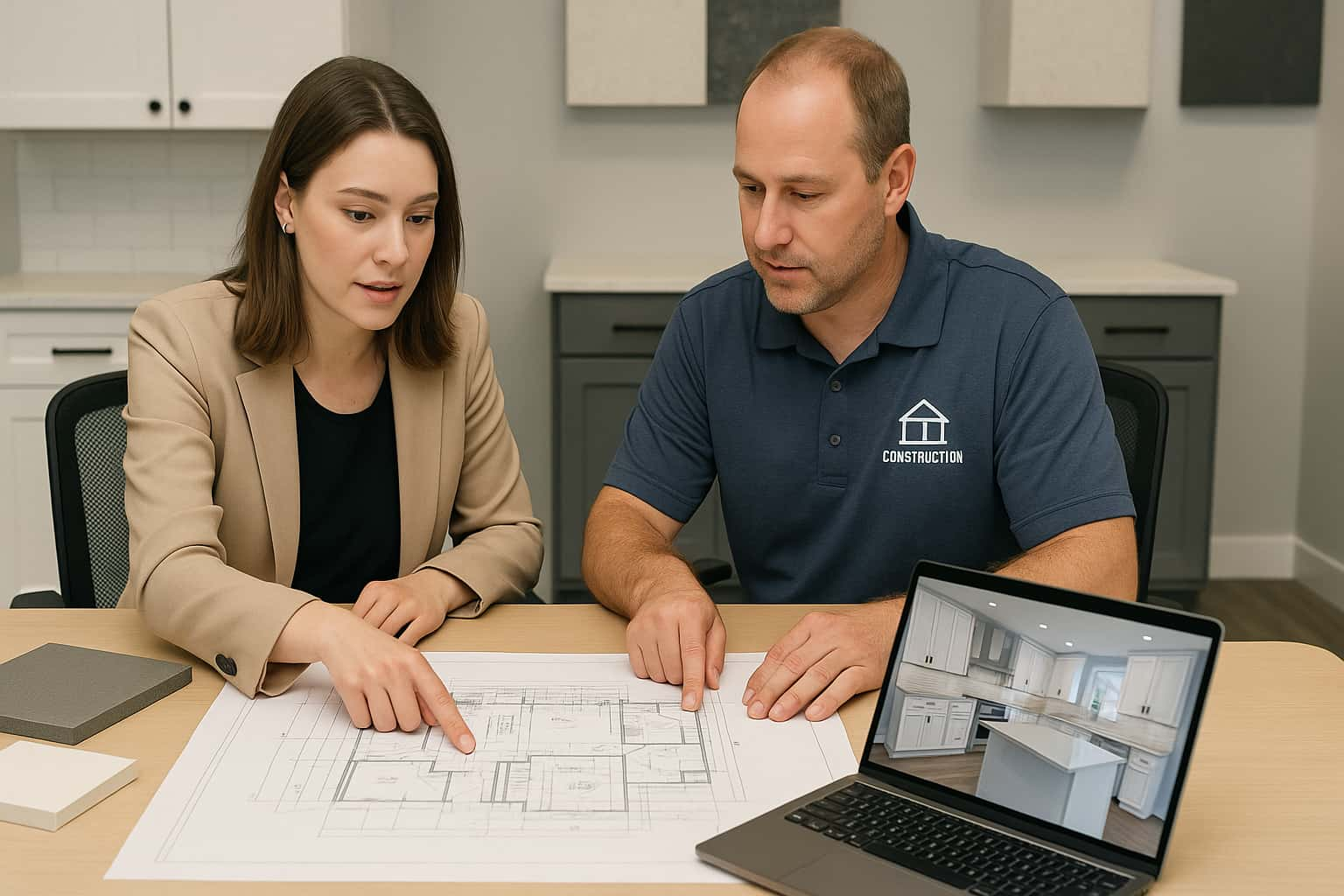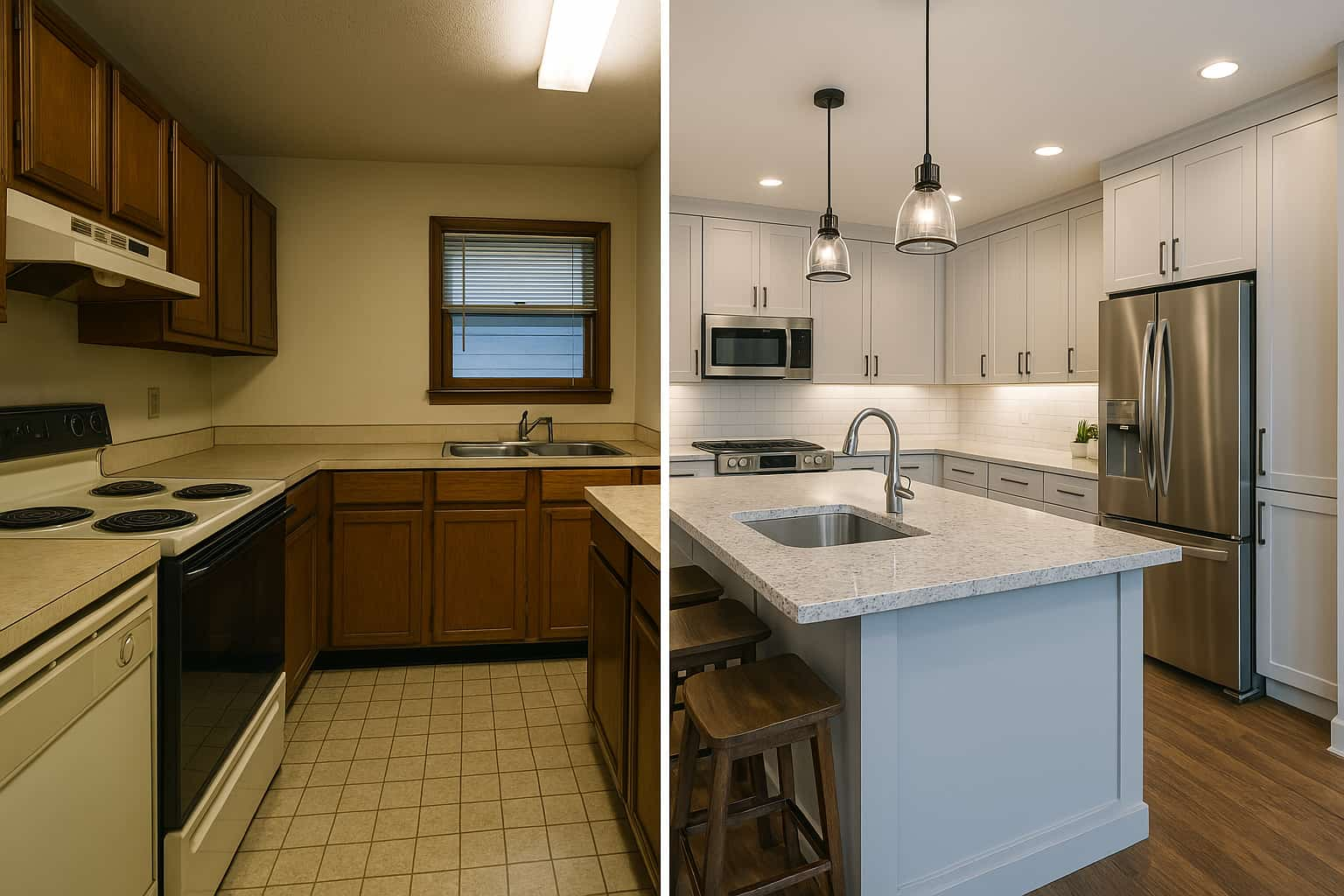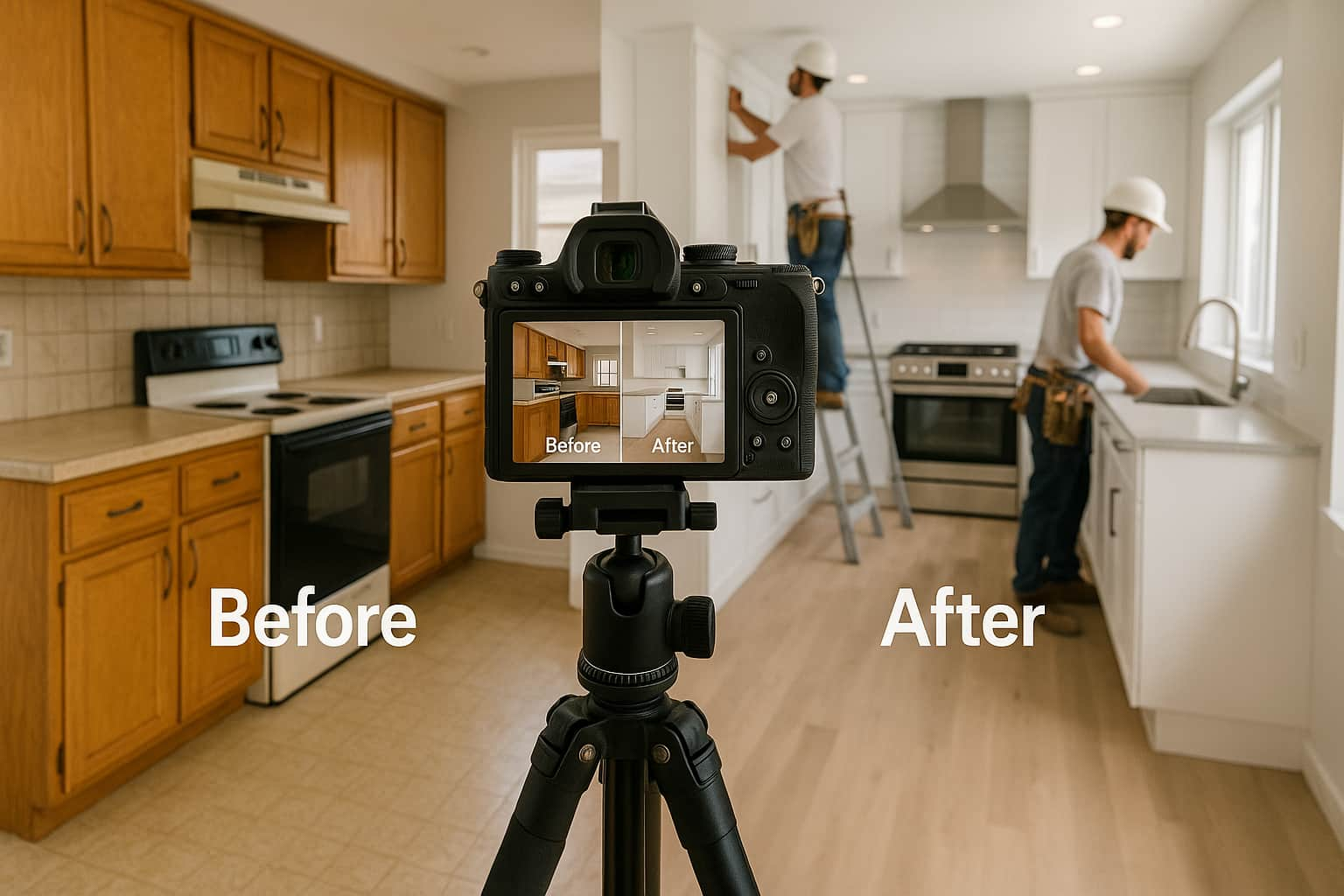How to Get Quality Remodeling Leads With Referrals
Getting quality leads is tough for home improvement businesses. You compete with everyone for the same potential customers. Plus, many home improvement leads from lead generation companies aren't ready to buy.
Here's the thing: most contractors miss one of the best lead sources available. Interior designers work with your ideal customers every day. These homeowners have budgets, clear project goals, and they're ready to start.
The problem? Designers and contractors rarely work together well. This creates delays, cost overruns, and frustrated customers.
When you fix this disconnect, something amazing happens. You get a steady flow of pre-qualified leads. Your projects run smoother. Customers love the experience.
This guide shows you exactly how to build your own designer referral network for home improvement lead generation. You'll learn to create partnerships that send you quality kitchen remodeling leads and bathroom remodeling leads month after month.
Table of Contents
Why Designer Partnerships Beat Other Lead Sources
How to Get Remodeling Leads with Designer Partners
Setting Up Win-Win Referral Agreements
Creating Incentive Programs That Work
Making Partnerships Run Smoothly
Marketing Your Home Improvement Lead Generation Advantage
Measuring Your Referral Success
Why Designer Partnerships Beat Other Lead Generation Services
Most home improvement projects hit problems because designers and contractors don't talk to each other. Research shows 85% of remodeling projects get delayed due to poor communication.
This creates a huge opportunity for smart home services businesses. When you partner with designers, you solve the biggest pain point in remodeling.
The Real Cost of Poor Communication
Here's what happens when designers and contractors work separately:
Projects take 30% longer than planned
Budget overruns happen on most jobs
Customers get frustrated playing messenger between teams
Change orders pile up when designs aren't buildable
Bad reviews hurt your reputation (a hidden cost that impacts your reputation)
Poor communication costs the construction industry $31 billion every year. That's $31 billion in wasted time, materials, and frustrated customers.
What You Get with Designer Partnerships
When you work with designers as true partners, everything changes:
Better Leads: Designers send you high quality home improvement leads with budgets and clear project goals. These aren't tire-kickers browsing the internet.
Higher Project Values: Designer-referred projects typically cost more because customers want quality work that matches their design vision.
Faster Sales: Referred customers convert at much higher rates than cold leads from other marketing strategies. The designer already sold them on the project.
Smoother Projects: When everyone works together from the start, projects finish on time and on budget.
Happy Customers: A seamless experience leads to great reviews and more referrals.
Studies show integrated design-build projects finish 102% faster and stay closer to budget compared to separate design and construction teams.
How to Get Remodeling Leads with Designer Partners
Not every designer makes a good partner for your services business. You need people who understand construction and like working with contractors.
What Makes a Great Designer Partner
Look for designers who have:
Experience with kitchen and bathroom projects in your service area
Basic construction knowledge
Good communication skills
Professional certifications (NKBA, ASID)
A collaborative attitude
Avoid designers who think they know everything about construction. You want partners who respect your expertise.
Where to Find Designer Partners
Professional Associations: Join groups like the National Kitchen & Bath Association (NKBA) or your local home builders association. Go to meetings and events.
Industry Events: Attend trade shows, design centers, and networking events. These places are packed with designers looking for good contractors.
Social Media: Follow local designers on Instagram and Pinterest using digital marketing tools. Comment on their posts. Share their content. Build relationships before asking for referrals.
Showrooms: Visit kitchen and bath showrooms. Many designers shop there regularly. Introduce yourself to the staff and ask about active designers.
Online Platforms: Use Houzz Pro, LinkedIn, and Facebook groups to connect with designers in your area.
The Vetting Process
Before partnering with anyone, ask these questions:
How many kitchen/bathroom projects do you complete each year?
What's your typical project budget range?
How do you usually work with contractors?
Can you show me examples of successful collaborations?
What construction challenges do you see most often?
Their answers tell you if they'll be good partners or constant headaches.
Setting Up Win-Win Referral Agreements
Once you find good designer partners, put your agreement in writing. This protects everyone and sets clear expectations.
Key Elements of Your Agreement
Your referral agreement should cover:
What Counts as a Referral: Define when you'll pay a referral fee. Usually, this means a signed contract above a certain amount.
How Referrals Work: Explain the process from initial contact to project completion.
Roles and Responsibilities: Who handles what during the project?
Communication Rules: How often will you update each other? What's the preferred method?
Payment Terms: When and how will you pay referral fees?
Change Order Process: How will you handle client-requested changes that affect both design and construction?
Sample Agreement Structure
Here's a simple framework:
"Designer agrees to refer qualified clients to Contractor for kitchen and bathroom remodeling projects. Contractor agrees to pay Designer 5% of the total contract value for projects over $15,000 that result in signed contracts within 90 days of referral."
Keep it simple. Complex agreements create confusion and disputes.
Legal Considerations
Have a lawyer review your agreement. Make sure it covers:
Confidentiality of client information
Compliance with local referral fee regulations
Dispute resolution process
Terms for ending the partnership
This small investment prevents big problems later.
Creating Incentive Programs That Work
Good incentives motivate designers to consistently refer high quality home renovation leads to your business. But the structure matters more than the amount.
Common Incentive Models
Flat Fee Per Lead: Simple but doesn't reward bigger projects. Example: $500 per qualified referral.
Percentage of Contract: Ties reward to project value. Example: 5% of total contract amount.
Tiered Structure: Higher percentages for bigger projects or multiple referrals.
Service Exchange: Provide free services instead of cash payments.
Sample Tiered Structure
This structure encourages designers to:
Refer bigger bathroom remodeling leads and kitchen projects
Send multiple clients per year for growing your business
Focus on client satisfaction
Beyond Money: Adding Extra Value
Smart contractors offer more than just referral fees for generating leads:
Priority scheduling for designer clients
Access to your showroom for client meetings in real time
Professional photos of completed projects
Joint marketing opportunities
Featured placement in your advertising
These extras strengthen relationships and help designers serve their clients better.
Making Partnerships Run Smoothly
Great partnerships need systems and processes. Without them, even good relationships fall apart.
The Perfect First Meeting
When a designer refers a client, your first meeting together sets the tone for everything. Here's how to nail it:
Prepare Together: Talk to the designer before meeting the client. Understand their vision and any concerns.
Define Roles: Decide who leads each part of the conversation. Usually, designers handle aesthetics while you cover construction and costs.
Address Budget Reality: Work together to align client expectations with their actual budget.
Document Everything: Make sure everyone leaves with the same understanding of next steps.
Communication That Works
Set up systems that keep everyone informed:
Primary Contacts: Each team should have one person who handles most communication.
Regular Check-ins: Weekly calls or emails to address issues before they become problems.
Shared Tools: Use project management software that both teams can access.
Response Times: Agree on how quickly you'll respond to questions (usually within 24 hours).
Technology Tools That Help
The right software makes collaboration easier:
CRM Systems: Track referred leads and manage relationships (HubSpot, Pipedrive)
Project Management: Organize tasks and deadlines (Asana, Trello)
Communication Platforms: Quick updates and discussions (Slack, Microsoft Teams)
Design Software: Share 3D models and plans (SketchUp, Chief Architect)
Handling Problems Quickly
When issues come up (and they will), address them fast:
Notify all parties immediately
Suggest solutions, not just problems
Document what happened and how you fixed it
Follow up to make sure everyone's satisfied
Quick problem-solving builds trust and strengthens partnerships.
Marketing Your Home Improvement Lead Generation Advantage
Once you have designer partners, use this competitive advantage in all your home improvement advertising and marketing efforts.
Your New Value Proposition
Emphasize what customers get from your collaborative approach:
One team handling design and construction
No communication gaps or finger-pointing
Faster project completion
Better budget control
Higher quality results
This appeals to "experience-driven" clients who want a smooth, professional experience.
Content Marketing Ideas
Create content that showcases your partnerships and remodeling marketing approach:
Before & After Stories: Show complete transformations with design and construction details.
Client Testimonials: Video testimonials where customers talk about the seamless process.
Behind-the-Scenes Content: Show designers and contractors working together on home remodeling leads.
Educational Blog Posts:
"Why Choose Integrated Design-Build for Your Kitchen Remodel"
"How Designer-Contractor Teams Prevent Cost Overruns"
"The Real Cost of Using Separate Design and Construction Teams"
Social Media Strategy
Use social media platforms to highlight your collaborative approach and reach potential customers:
Instagram: Post high-quality project photos and tag your designer partners.
Facebook: Share client success stories and behind-the-scenes content.
YouTube: Create videos showing the collaborative process in action.
Pinterest: Build boards featuring different styles you've executed with partners.
Joint Marketing Opportunities
Work with designer partners on:
Home show booth sharing
Educational workshops for homeowners
Co-hosted webinars about remodeling
Joint advertisements in local magazines
These activities benefit both businesses while reinforcing your partnership message.
Measuring Your Referral Success
Track the right metrics to understand what's working and what needs improvement.
Lead Generation Metrics
Number of Referrals: How many leads does each designer send monthly?
Conversion Rate: What percentage of referred leads become customers?
Average Project Value: Are referred projects worth more than other home improvement leads for sale?
Cost Per Lead: What's your effective cost for each referred lead?
Project Performance Metrics
Timeline Performance: Do collaborative projects finish on schedule more often?
Budget Performance: How often do referred projects stay within budget?
Change Order Frequency: Fewer change orders indicate better upfront planning.
Client Satisfaction: Survey clients about their experience with the collaborative process.
Partnership Health Metrics
Designer Engagement: How actively does each partner participate?
Designer Retention: How many partners stay active over time?
Partner Satisfaction: Regular feedback from your designer partners.
Sample Monthly Report
Track these numbers monthly:
Total referrals received: 12
Referrals converted to contracts: 8 (67% conversion rate)
Average referred project value: $28,500
Total revenue from referrals: $228,000
Referral fees paid: $11,400 (5% average)
Cost per converted lead: $1,425
This data helps you see which partnerships are most valuable and where to invest more time.
Getting Started Today
Building a designer referral network takes time, but you can start immediately with these marketing efforts:
Week 1: Research local designers on social media and identify 10 potential partners.
Week 2: Attend one industry event or visit showrooms to meet designers in person.
Week 3: Reach out to 3-5 designers for coffee meetings to discuss potential partnerships.
Week 4: Draft your referral agreement template and create your incentive structure.
Month 2: Formalize agreements with 2-3 designers and start your first collaborations.
Month 3: Evaluate results and expand your network based on what's working.
The key is starting small and growing based on success. Don't try to partner with every designer in town. Focus on building strong relationships with a few quality partners first.
Why This Beats Other Lead Generation Services
Designer referrals offer advantages over other common home improvement leads sources:
Vs. Online Lead Generation Services:
Higher quality renovation leads (pre-qualified by designers)
No competition with other contractors
Better conversion rates
Lower cost per actual customer
Vs. Digital Marketing:
Builds on existing trust relationships
Targets customers already planning projects from search results
Provides immediate credibility
Creates ongoing partnerships, not one-time transactions
Vs. Cold Marketing:
Customers come to you pre-sold on the project
Higher average project values
Better customer experience leads to more referrals
Sustainable long-term growth
The Bottom Line
Interior designer referral networks solve real problems for everyone involved:
Designers get reliable contractors they can trust with their clients
Contractors get quality leads from customers ready to buy
Homeowners get a smooth, professional remodeling experience
This isn't just another marketing tactic. It's a business strategy that creates competitive advantages your competitors can't easily copy.
The home improvement market is getting more competitive every year. Customers expect higher quality and better service. The contractors who win will be those who create the best customer experience from start to finish through collaborative success.
Designer partnerships help you do exactly that while building a steady pipeline of quality leads for your business through bridging the design-construction gap.
Ready to start building your designer referral network? The contractors who act now will have the strongest partnerships before their competitors catch on.
If you simply want to get more remodeling leads today, sign up for free with ResultCalls today!

Alex Gambashidze
Marketing Associate at ResultCallsHello everyone! My name is Alex and I write these blogs to help educate small business owners on different ways to grow their business. My goal is to make lead generation as easy as possible for you. After reading these blogs, I hope you leave with some actionable steps that will get you closer to growing your business :)
2,000+
Happy local businesses
See what some of them have to say.


